You can count the seeds in a single apple, but you cannot count the apples in a single apple seed
a celebration of our first substantial malus sieversii harvest, viva la wild apples! :)
“A seed hidden in the heart of an apple is an orchard invisible.” - Welsh Proverb
(I was introduced to the proverb above in a gorgeous book called Awakening Artemis By Vanessa Chakour)
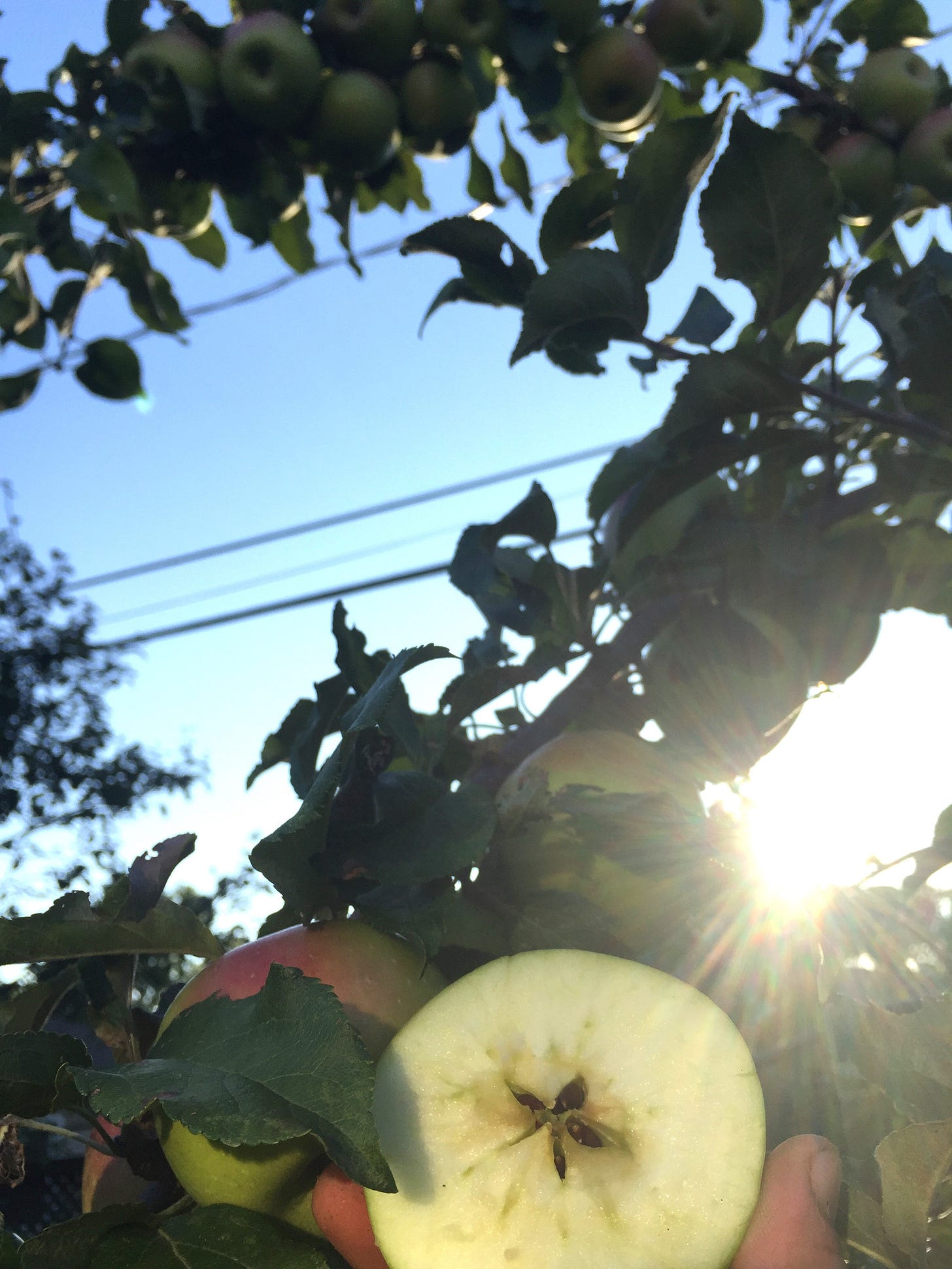
I am someone that has loved apples since a relatively young age (as I grew up on an apple orchard in the South Okanagan of BC where my parents grew some superb apples in excellent soil). I found great joy in being able to wake up in the morning and pick a couple juicy apples fresh off the tree on my way to school in autumn or before setting out on an adventure on the weekends. Later in life my interest in seed saving, preserving ancient heirloom varieties and breeding new ones increased and so I inevitably came to wonder “where did modern apples come from?”. After some extensive research into the genetics of modern apples, root grafted vs apple trees grown from open pollinated seed and looking into where the wild relatives of domesticated apples still grow, I discovered Malus sieversii.
Here are a few main points worth considering with regards to the importance of preserving ancient (and disappearing) progenitor species like Malus sieversii
The wild apple trees Malus sieversii seeds produce have the potential to live to be 300-years-old, becoming up to 5 feet across at the base of the trunk and 60 feet tall. Each seed can grow a tree that produces a completely unique apple variety.
Malus sieversii is also a valuable resource for its ability to grow without pesticides also in harsh climates.
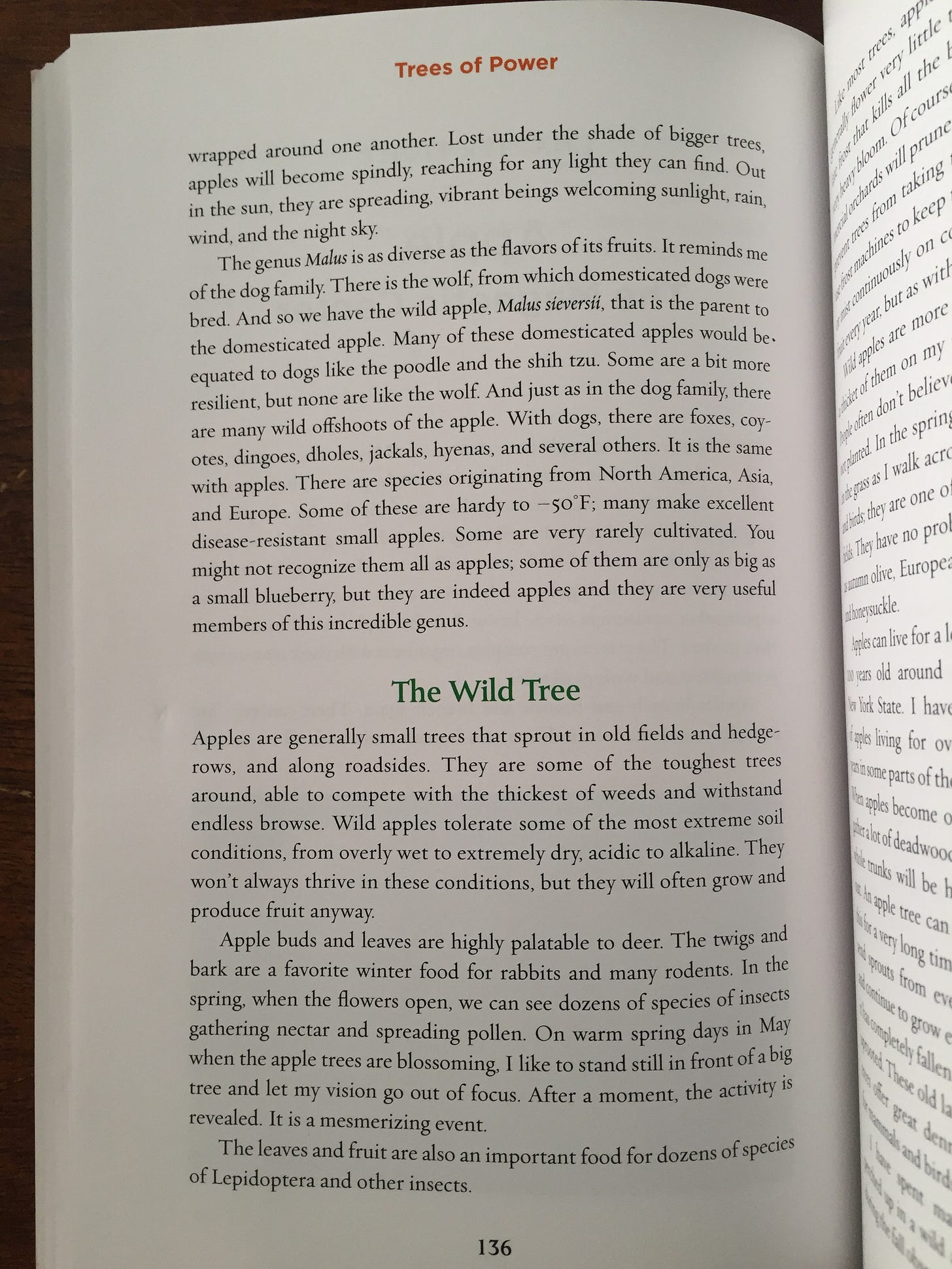
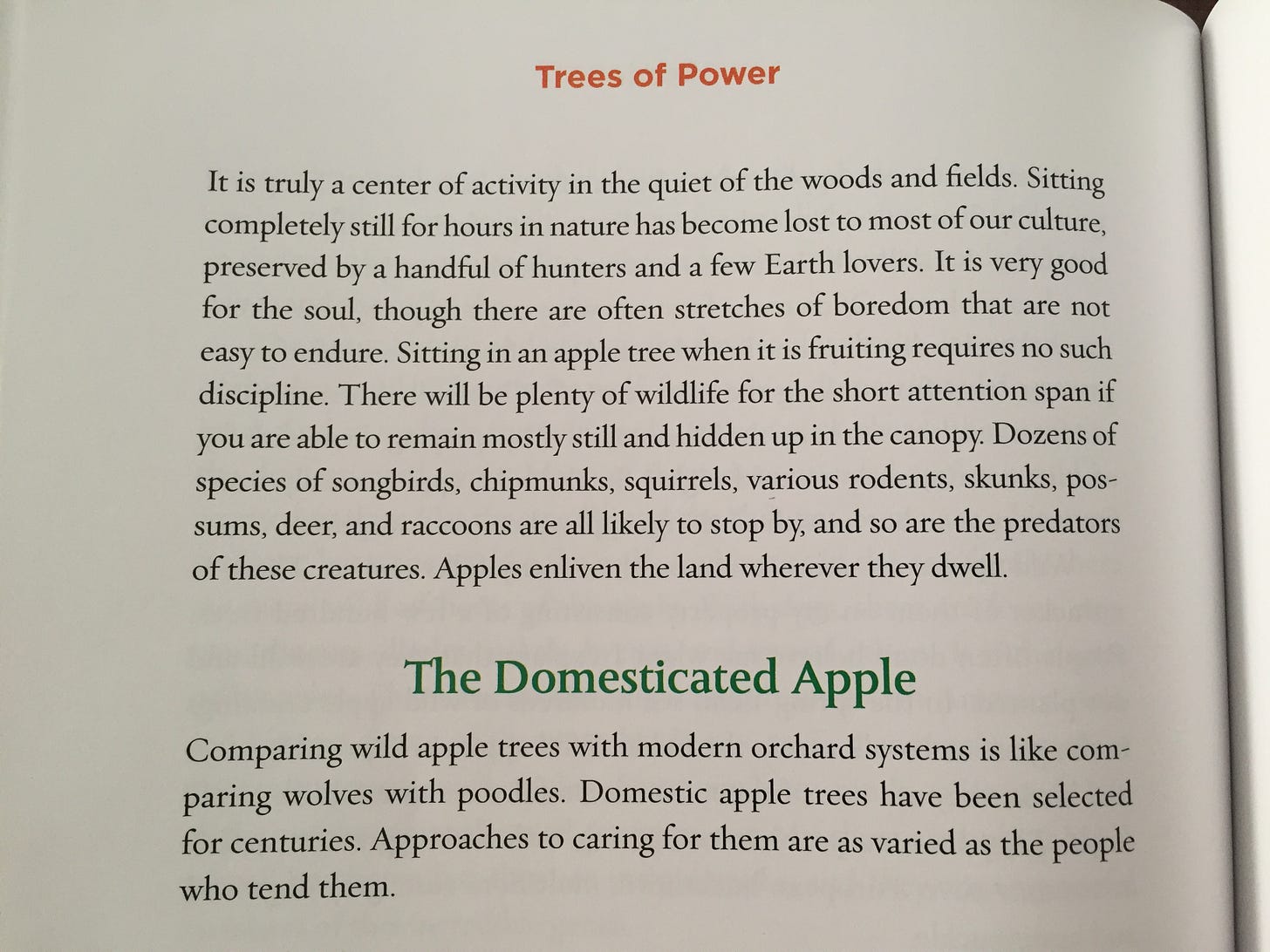
With recent erratic manipulated weather patterns, the industrial domesticated apples aren’t set to cope with the extremes we face as we strive to grow food for ourselves and our communities, which makes it even more relevant to preserve robust species such as this ancient apple.
Key points on the importance of preserving Malus sieversii for future generations:
- Gathering, saving and growing wild seeds from the progenitor species of our favorite domesticated crops is critical in protecting our food supply from crop diseases, insect pests, and catastrophic weather.
- It is estimated that 16,000 apple varieties existed four centuries ago. By 1907, that number was whittled down to 7,098. Today, just 15 varieties compose 90% of all apples sold in grocery stores. By narrowing the commercial apple gene pool to 15 varieties, we have set ourselves up for a catastrophic event on a scale much larger than the Irish potato famine. Our modern apples have almost no disease resistance left. That is one of the reasons why the wild Malus sieversii apples from Kazakhstan are so important.
- The apples now on the market are subject to apple scab, cedar apple rust, fire blight, powdery mildew, and the exit wounds of coddling moths.
- Consumers are put off by the slightest imperfection, so growers spray their apples an average of 10 times a year.
- The native apples of Kazakhstan have an incredible amount of disease resistance.
In addition to the cultural, agricultural and botanical imperatives for protecting the wild apple from extinction there are also nutritional and medicinal arguments for the importance of protecting this ancient ancestor of the modern apple.
These ancient wild apples are a living genetic database that contains the potential for countless new apple varieties to be developed that would be resilient to pest and disease pressures and offer a wide diversity in flavor, nutrition and form.
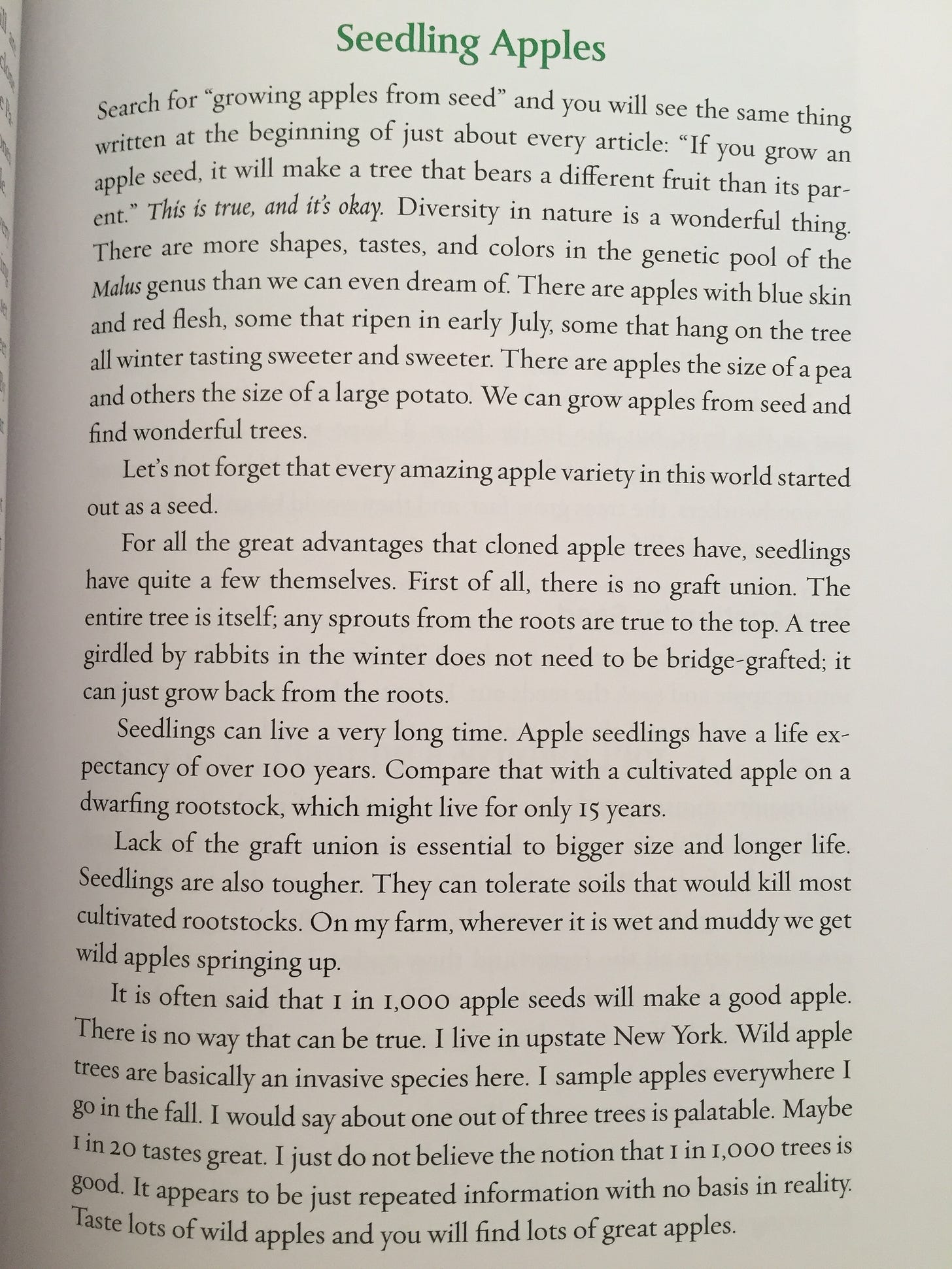
Philip Forsline was the curator of the apple collection at the USDA-ARS Plant Genetic Resources Unit at the New York State Agricultural Experiment Station since 1984. For over a decade he visited the apple forests of Kazakhstan every couple years and brought back with him seeds from every new type of Malus sieversii he found growing there. As of 2010, he had about 2,500 varieties of apples growing in his collection in Geneva, New York, and had tasted every single one.
One visitor to his wild apple tree collection in Geneva said “At least eight varieties tasted hauntingly of roses. Several surprised me with the distinct taste of anise or fennel. There were aromas of all kinds. Flowers and spices and nuts, including coconut. Lots of other fruits: orange peel and lemon, strawberry, pineapple, green banana. Rhubarb. Occasionally, popcorn, and potatoes. Some apples seemed to suffer from confused genus identity and tasted like pears.”.
For more info on the history, botanical origins, cultural relevance and food forest design relevance of this species of apple see:
The Wild Apples of the Tian Shan Mountains
I am someone that has loved apples since a relatively young age as I grew up on an apple orchard in the South Okanagan of BC where my parents grew some superb apples in excellent soil. I found great joy in being able to wake up in the morning and pick a couple juicy apples fresh off the tree…
Now, long story short, we managed to get seeds (7 years ago) and managed to get 2 of the 10 seeds to take in our garden. We also found an organic nursery in Quebec a couple years ago that had grown out a thousand or so seeds and was selling third year bare root seedlings so we purchased a couple of those too and they are coming along well. We had our first harvest from one of the trees we grew from seed last year (it blossomed for the first time and produced about a dozen apples).
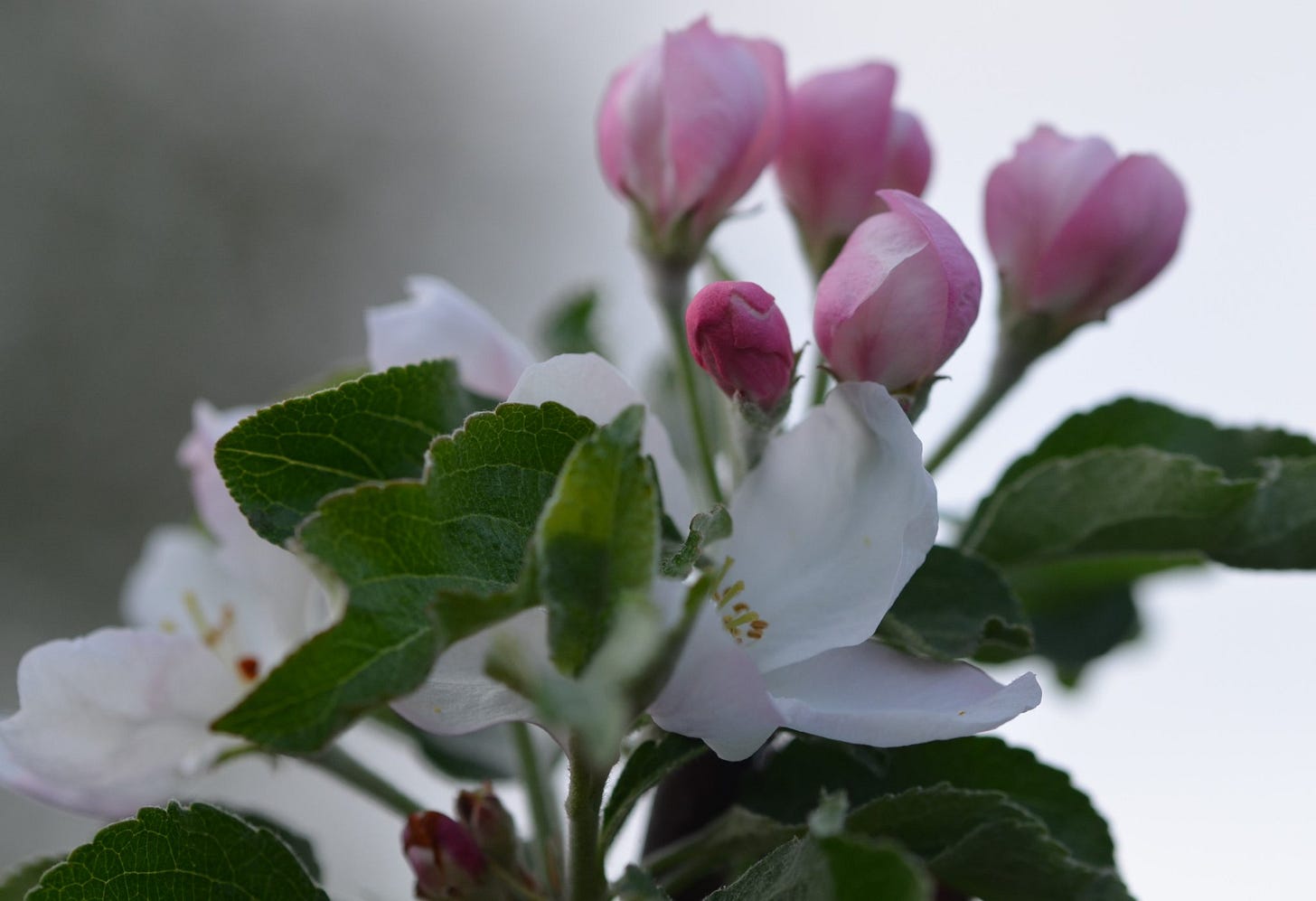
We are in our second harvest for that tree now and this morning it was loaded with well over a hundred fruit.
I find the flavor of our first ‘new apple variety’ (the fruit being produced by the malus sieversii tree we grew from seed that I am harvesting from now) to be tangy, bright, vibrant with a sweet background flavor and a hint of nuttiness. The fruit are fist sized and bigger with a light blush color on about 30% of the skin. I also find that is has a refreshing crisp and dense texture similar to Fuji apple flesh. My wife says it has subtle notes reminiscent of Macintosh, Ambrosia and Granny Smith and she thinks it pairs great with white cheddar, swiss cheese or monterey jack. She also finds that it goes well diced up in a pecan salad and/or enjoyed with white wine. I think they would make great hard cider due to the rich tannins and organic acids and would also make for a lovely pie apple.
We noticed that our new apple variety has very pronounced lenticels (the small white dots on the skin of the apple that allow for the apple to breathe) and they remind me of when the star filled sky is transitioning into a blush colored sunrise. So we have decided to name this new variety Starlight Blush.
I did a first harvest of some that were early to ripen up a few days ago and extracted the seeds to send out in the mail to a bunch of permaculture designers, food forest creators and passionate gardeners who expressed an interest in giving them a place to spread out their roots and achieve their true potential. I am pretty excited to have shared second gen (“Turtle Island” grown) malus sieversii seeds to people all over Canada and the US. It makes my heart glad to imagine towering wild apple trees growing in varied forest climates, nurturing many future generations and providing habitat and food for non-humans too.
I think the trees that the seeds produce which are harvested from our tree will be especially genetically resilient. Not only have they been given excellent quality living soils to thrive and achieve their highest potential but I feel it it also worth considering that where we live we have had 9 tornado warnings in the last month and a half and many intense wind storms (weather warfare anyone?).
Despite the intense (and often freaky) storms we have been getting (some with 100km an hour plus wind gusts, hail and over 7 inches of rain in one night a week or so ago) the wild apples were still hangin in there on our tree (until we picked them this morning)!
I imagine the genetic memory passed on by the tree (that received all this stimulus from the intense storms this year will be stored in the fruit/seeds, resulting in some especially resilient 2nd gen wild apple trees next year.
And that brings us to today’s business.
Today's Harvest (malus sieversii var. Starlight Blush) :
I have a few projects in mind locally for food forests and helping breed new apple varieties for orchardists with the remaining seeds that will be extracted from the apples that are part of this year’s harvest but I will likely be able to spare some seeds from next year’s harvest.
I would like to make an offer to any existing paid subscribers (as you would have already covered the shipping costs through your generous donations) or anyone that would like to sign up to become a paid subscriber that if you have a spot where some of these seeds could set down roots in living soils and have a chance at achieving their true potential and you want to get on a waiting list, I am willing to try sending some your way next year.
If you are a paid subscriber and are interested in getting on the waiting list for some of next year’s seeds just leave a comment or email me at recipesforreciprocity@proton.me
PS - FYI : Apple seeds are best put right into rich living soil soon after they are extracted from the apples and allowed to go through a natural stratification process either outside or in the fridge (and not dried out like most seeds) as this helps maintain a higher viability count.
These seeds are best planted while they are fresh (and not dried out like most seeds) as this helps maintain a higher viability count. They would need to be either planted into living soil immediately (where they can be kept evenly moist until winter sets in and they can go through the natural winter cycle to help them wake up in the spring) or added to the fridge in a medium that can help them retain moisture to immediately initiate a simulated winter stratification cycle for if you intend on starting the seedlings inside and having them grow through the winter in a window or under lights.
For more information on growing apple trees from seed read: https://practicalselfreliance.com/planting-apple-seeds/
Oh, and if you are interested in where I got the phrase that is the title of this post : https://odysee.com/@corbettreport:0/solutions2022:a?t=1004




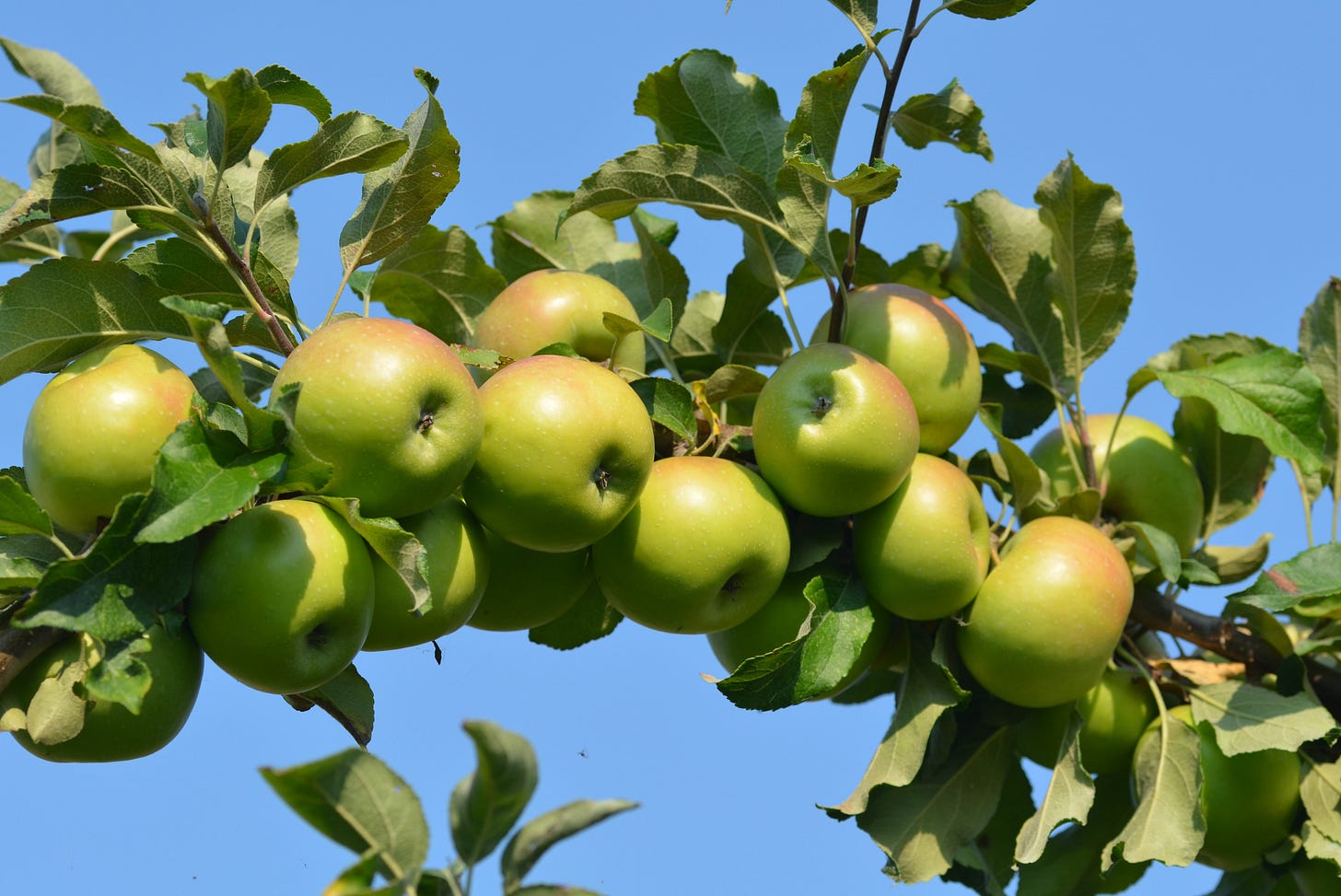
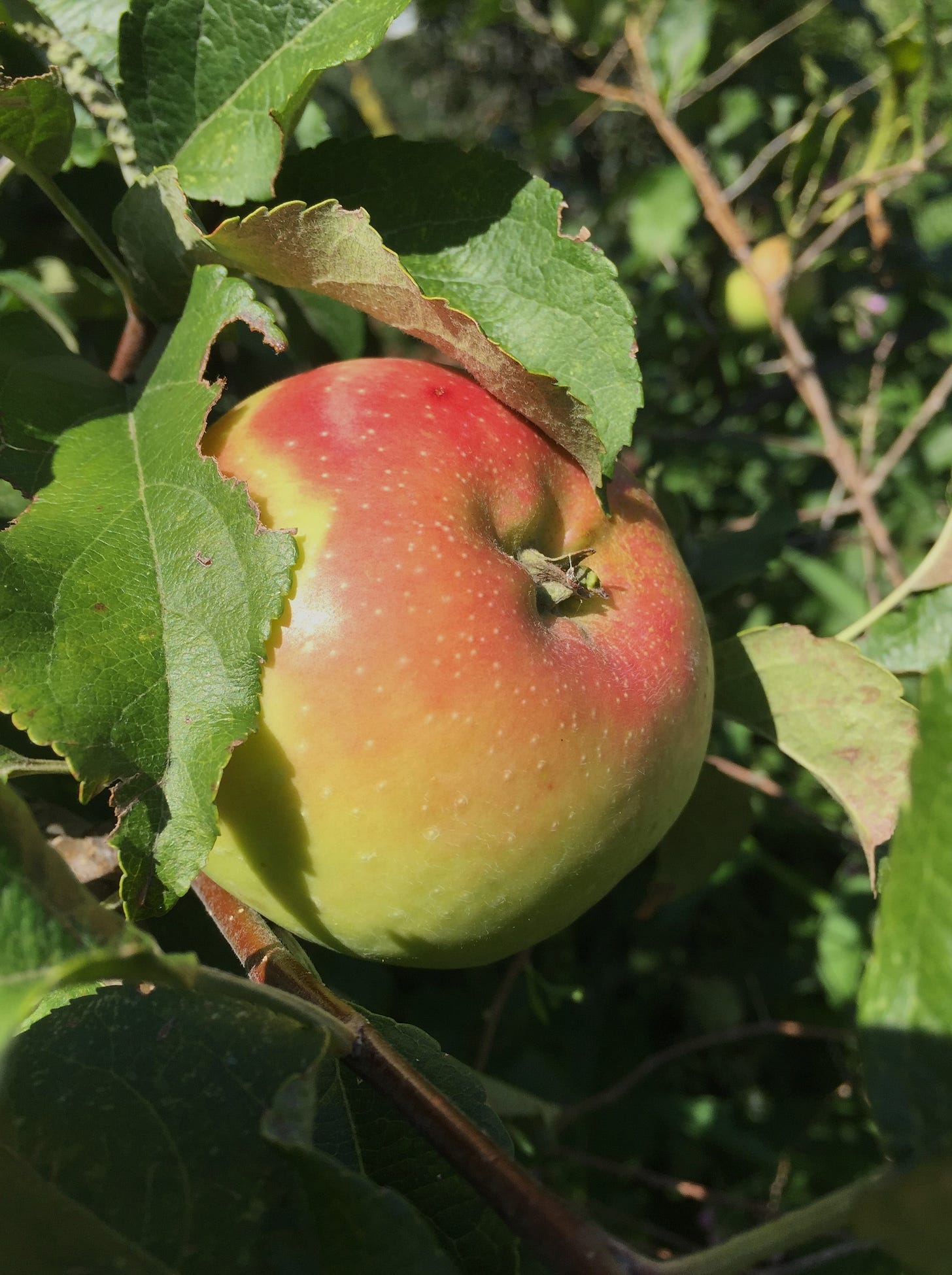
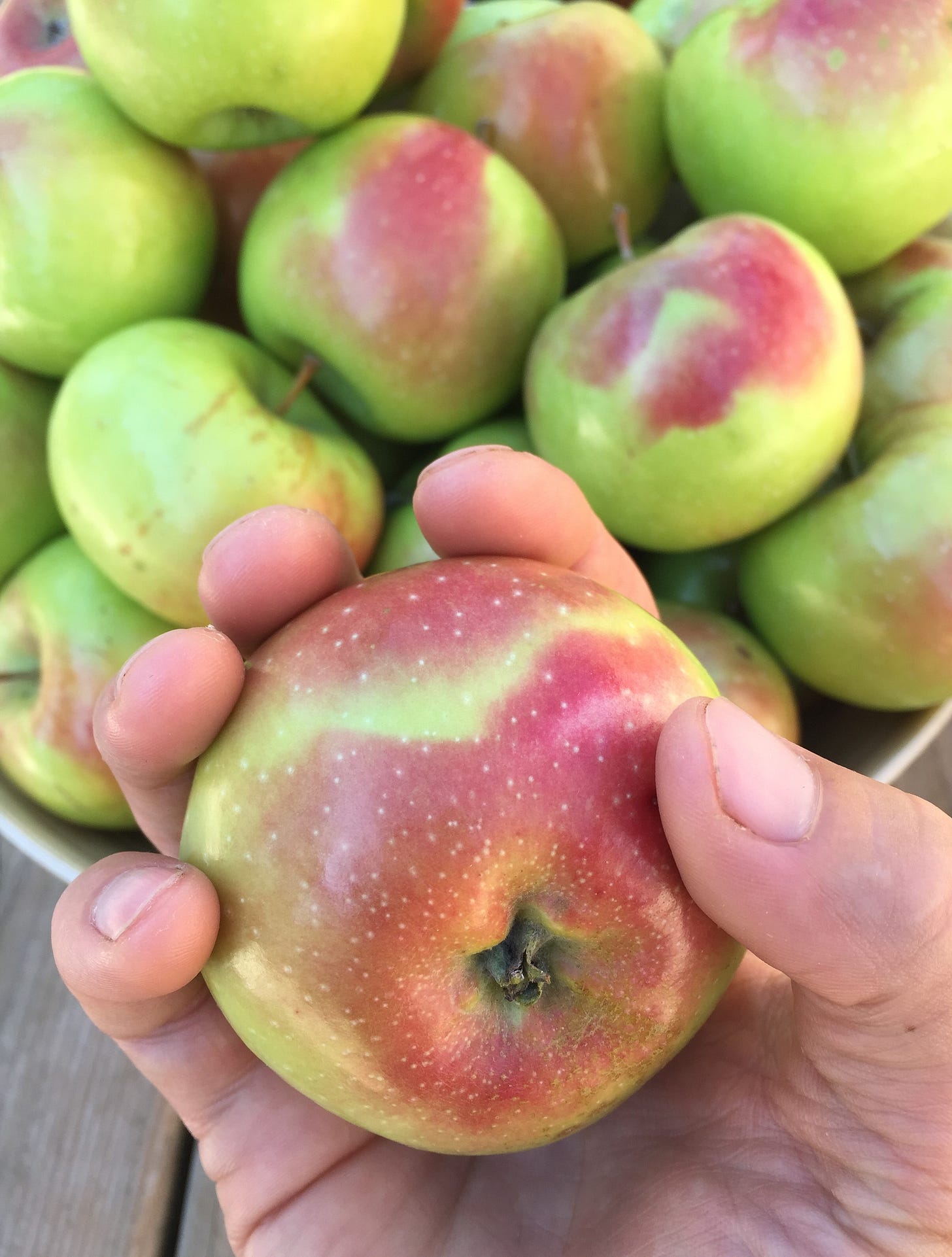
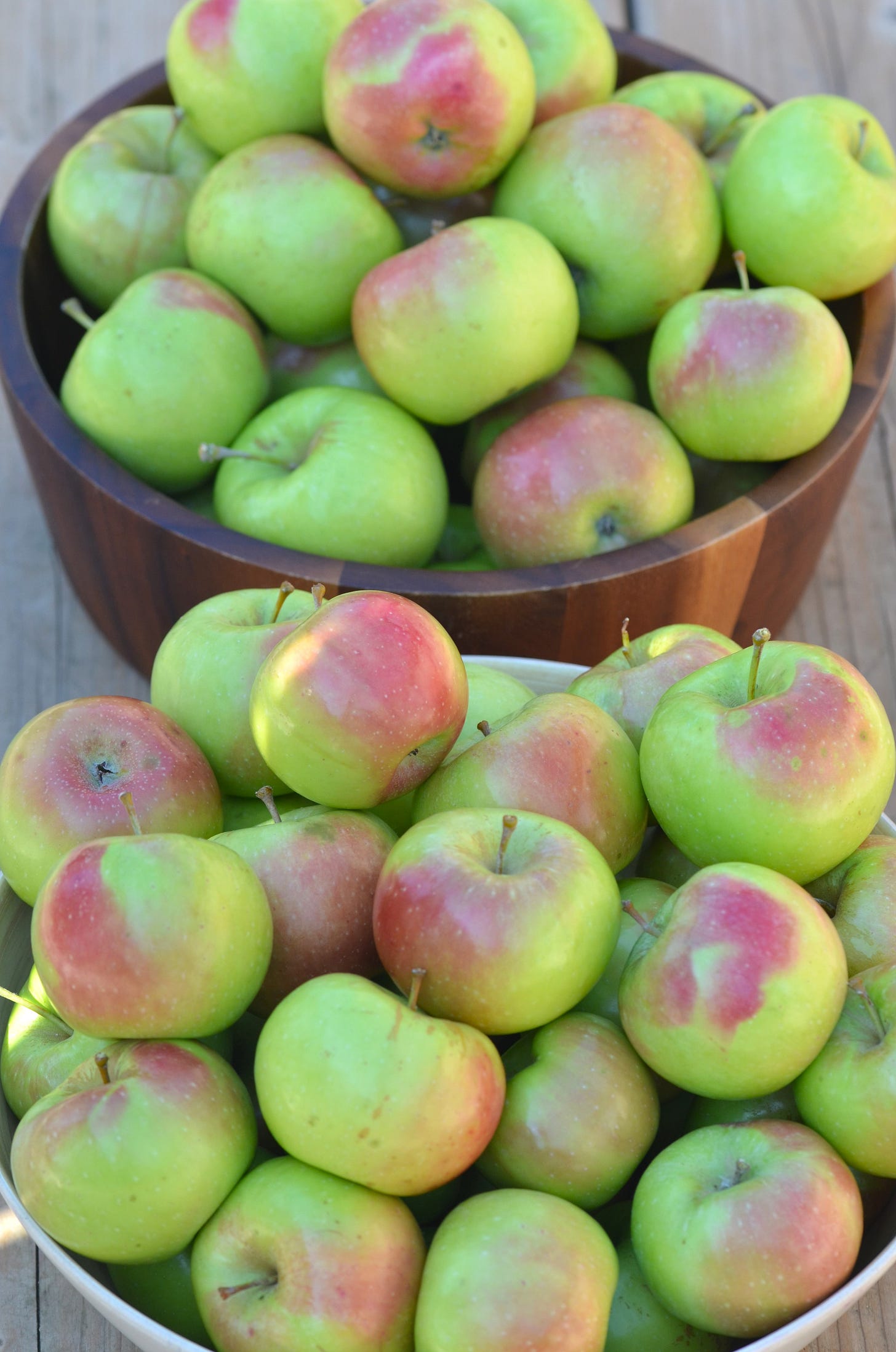
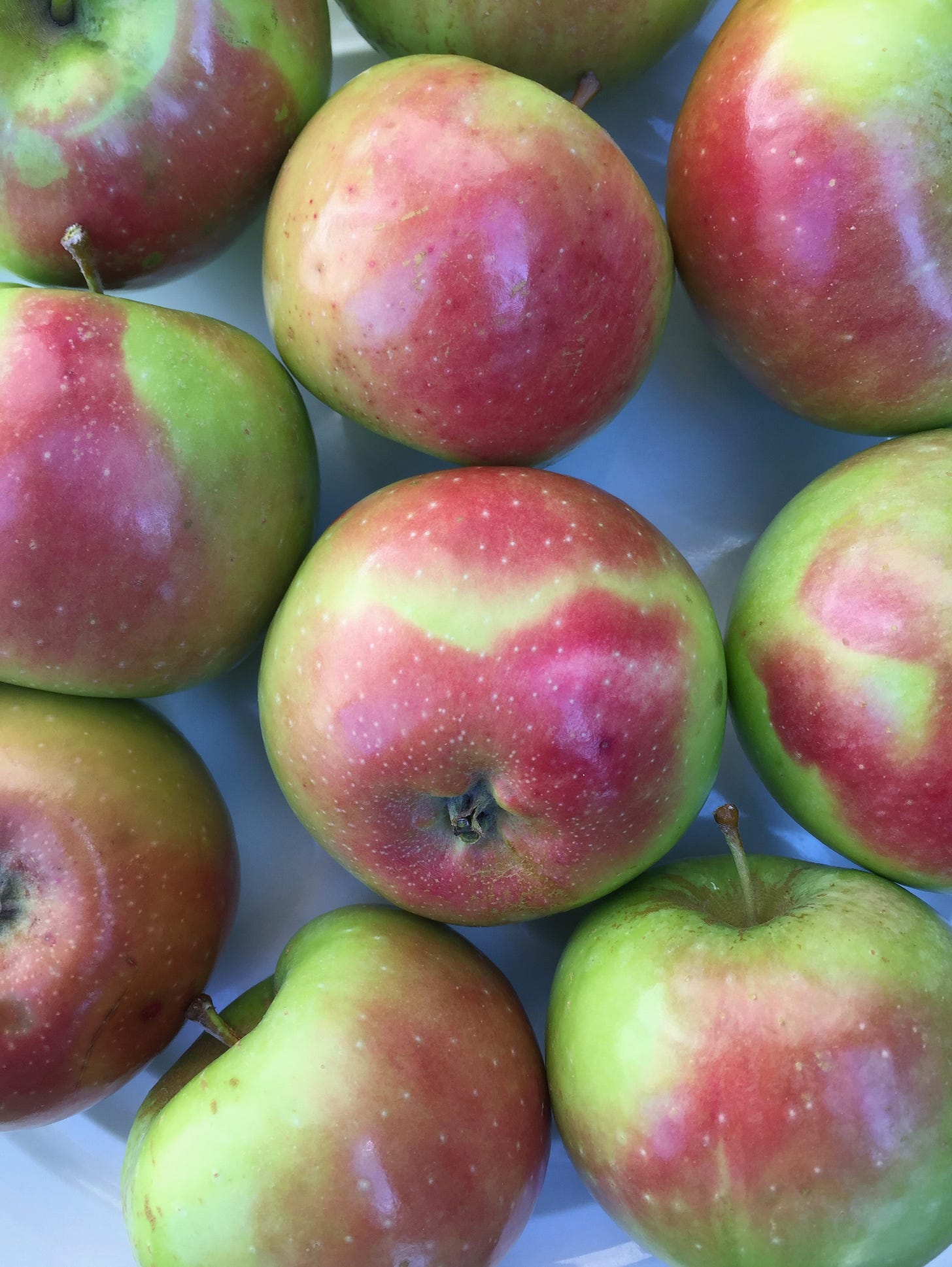
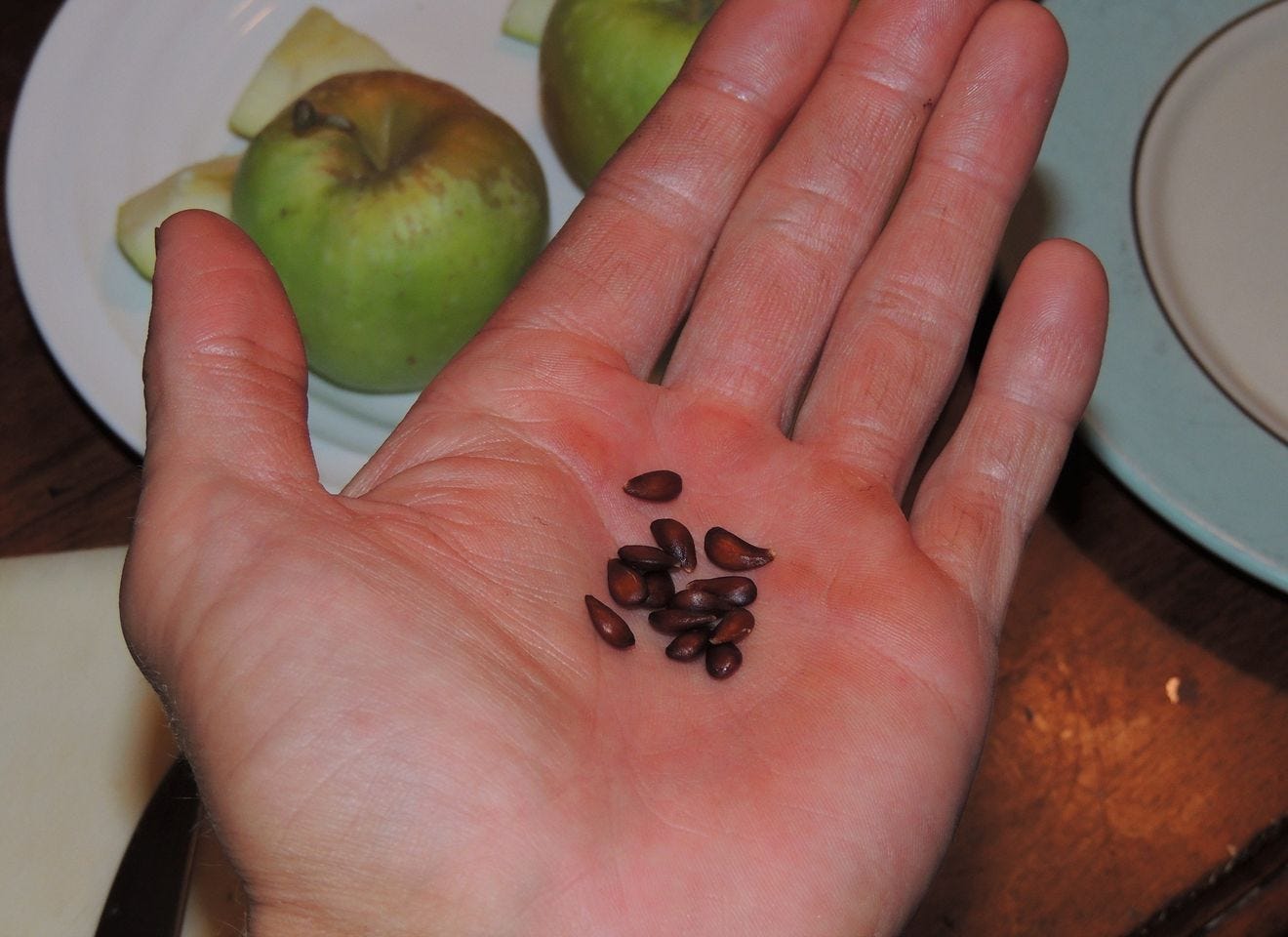
Gavin! What a wonderful surprise to get your beautiful book in the mail. It's gorgeous and so packed with information. And recipes! I'm especially interested in the Ethiopian ones. And the essays on Voluntaryism and whether evil exists--right up my alley. And all the medicinal plant info. What a gem!
I'm going to delve in a bit before Weds, when I'll deliver it to the newlyweds. I think it will be good timing for them because James, who is the gardener, isn't working until after their honeymoon in New Zealand. So he's doing a lot of the cooking and having fun with it.
Thank you for enabling me to give them such a meaningful gift!
I loved this article and celebration of these robust and tasty apples . I used to have an orchard and really enjoyed all the benefits of growing a diversity of varieties. I live on Dartmoor , a wild part of the UK, if you are still running the waitlist for seeds I will sign up. I will give them to the community farm here and friends.